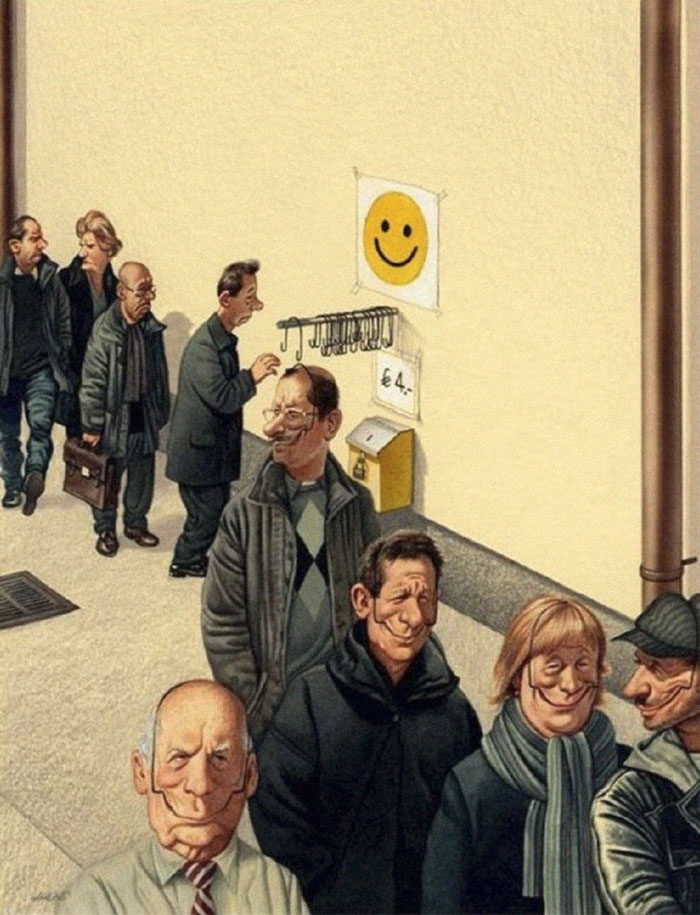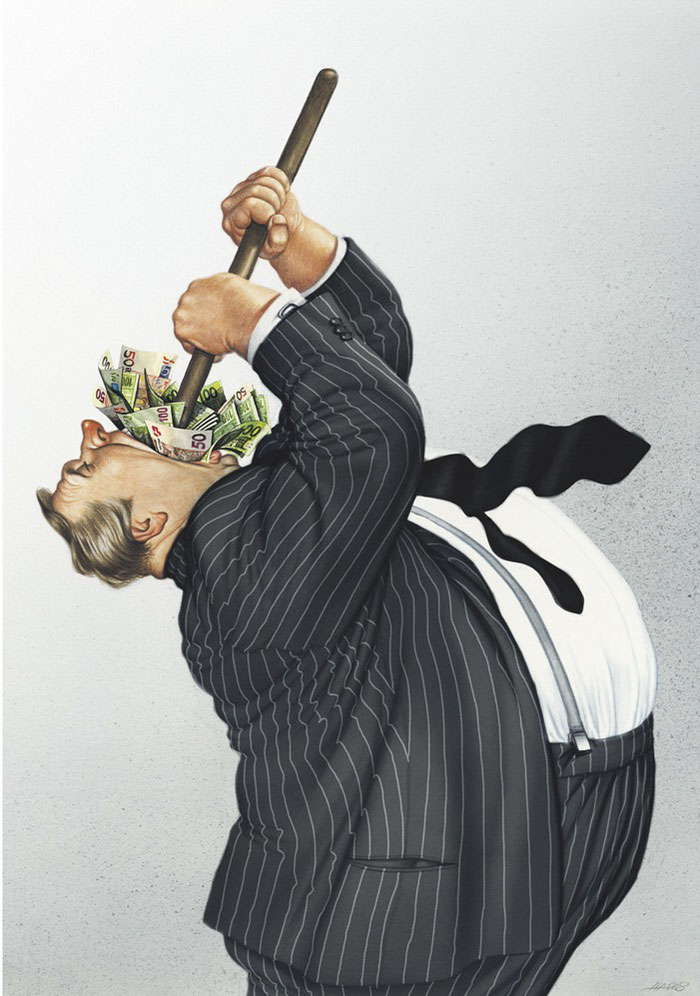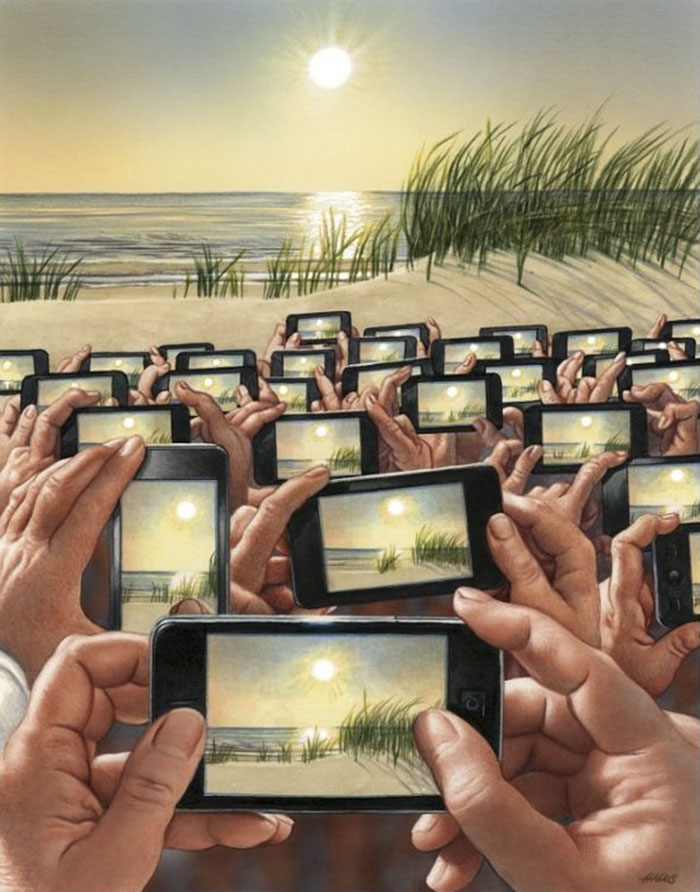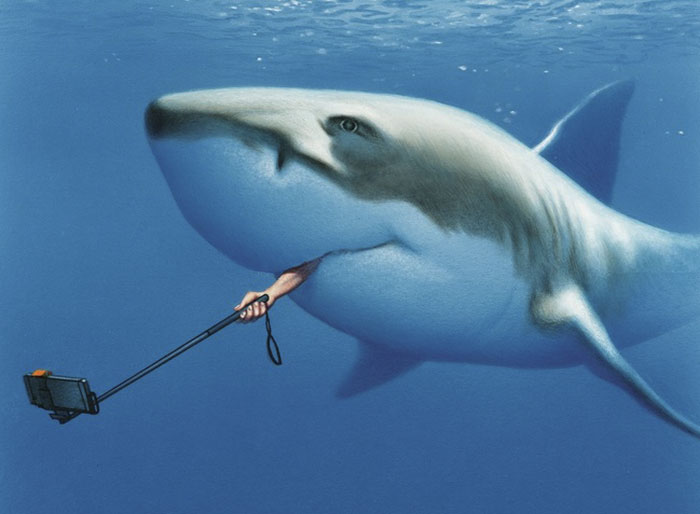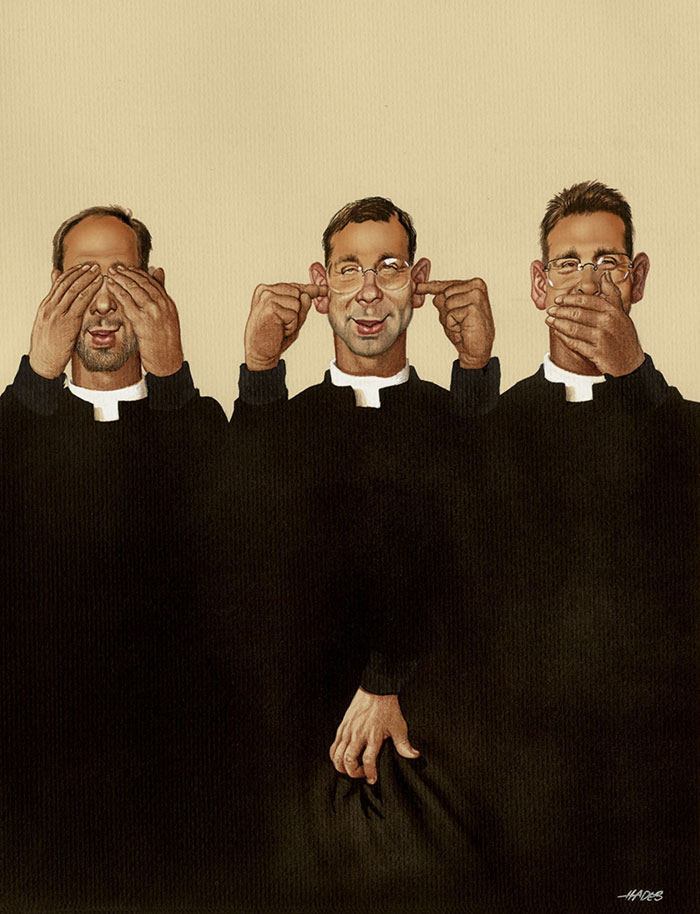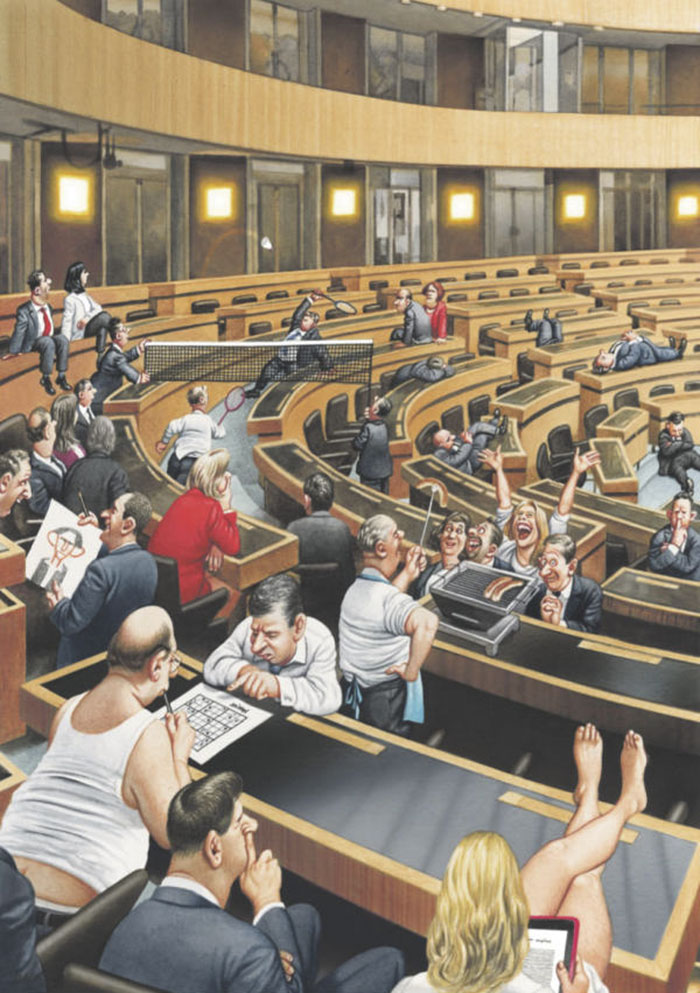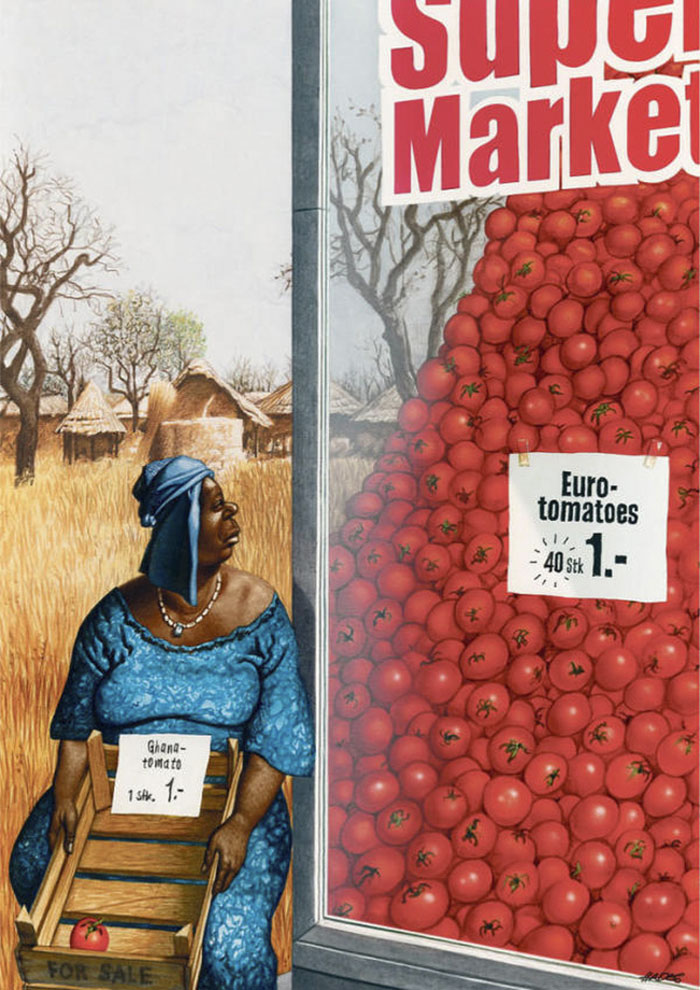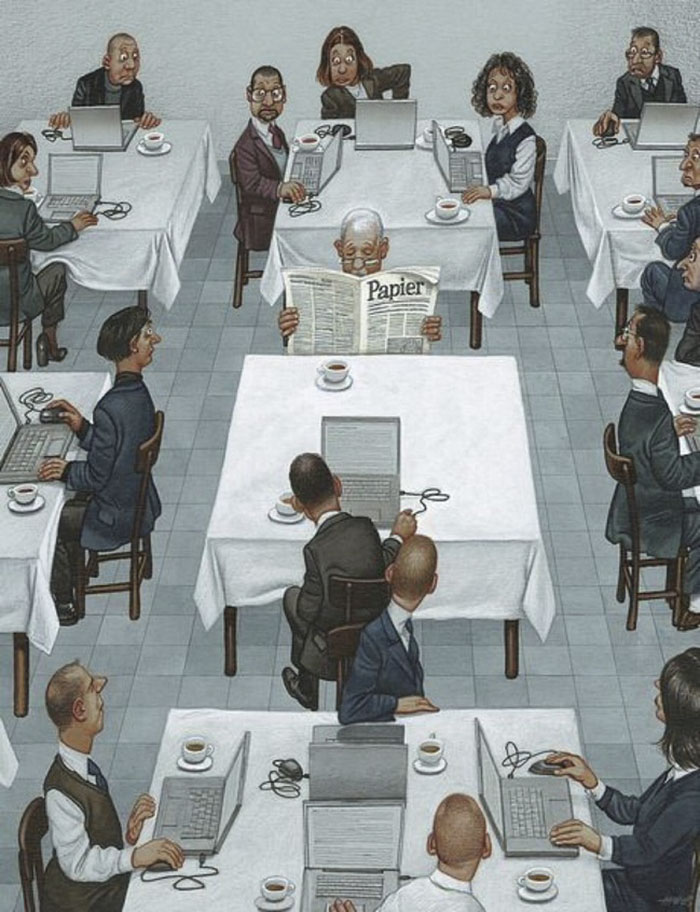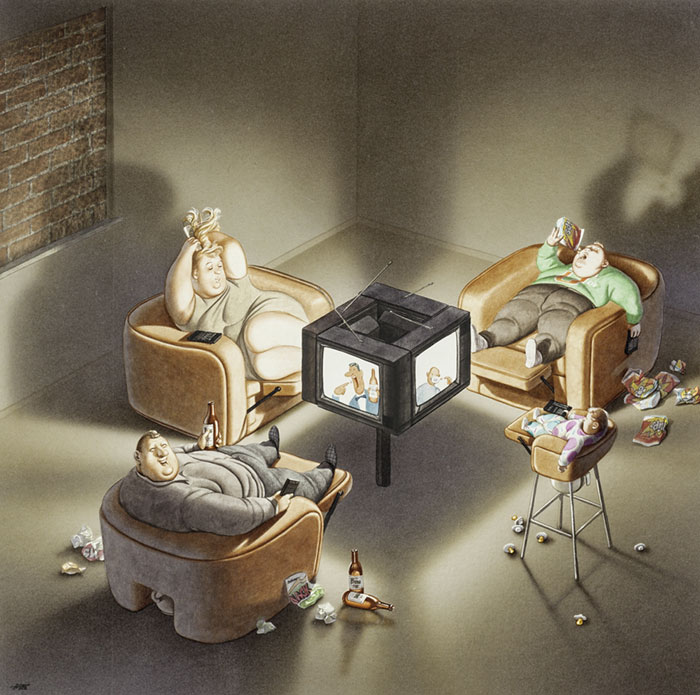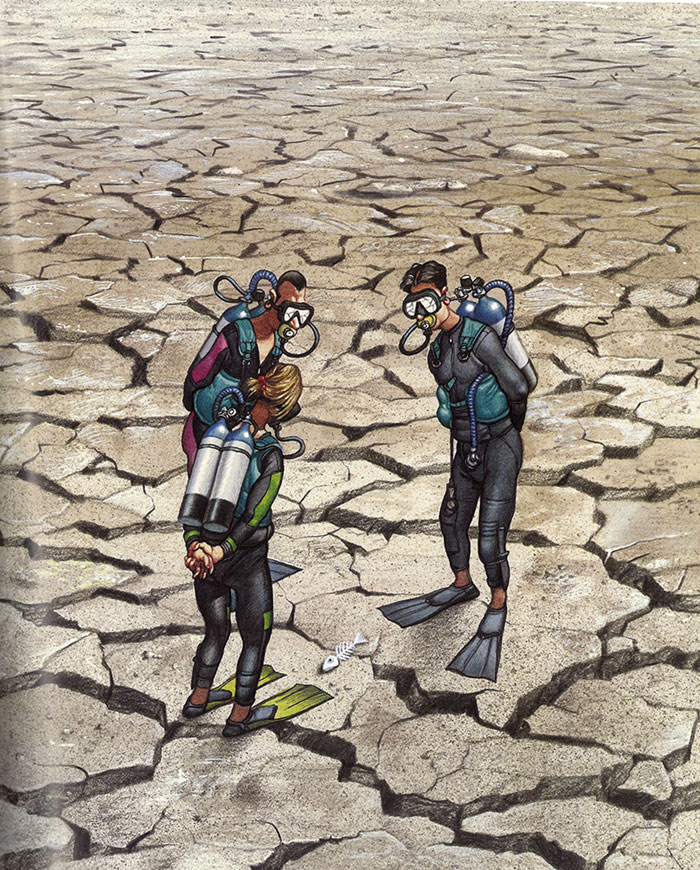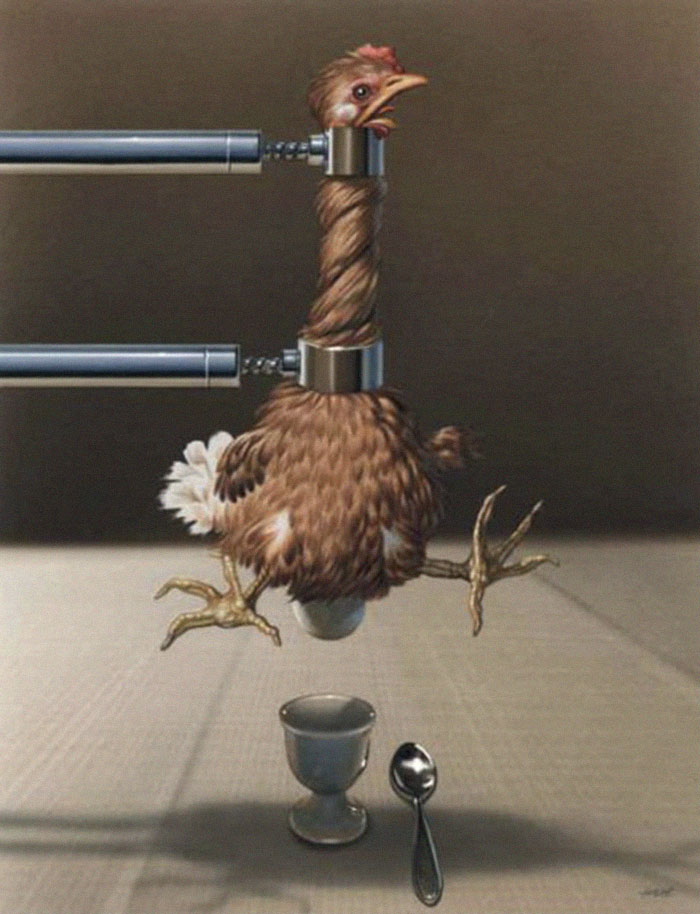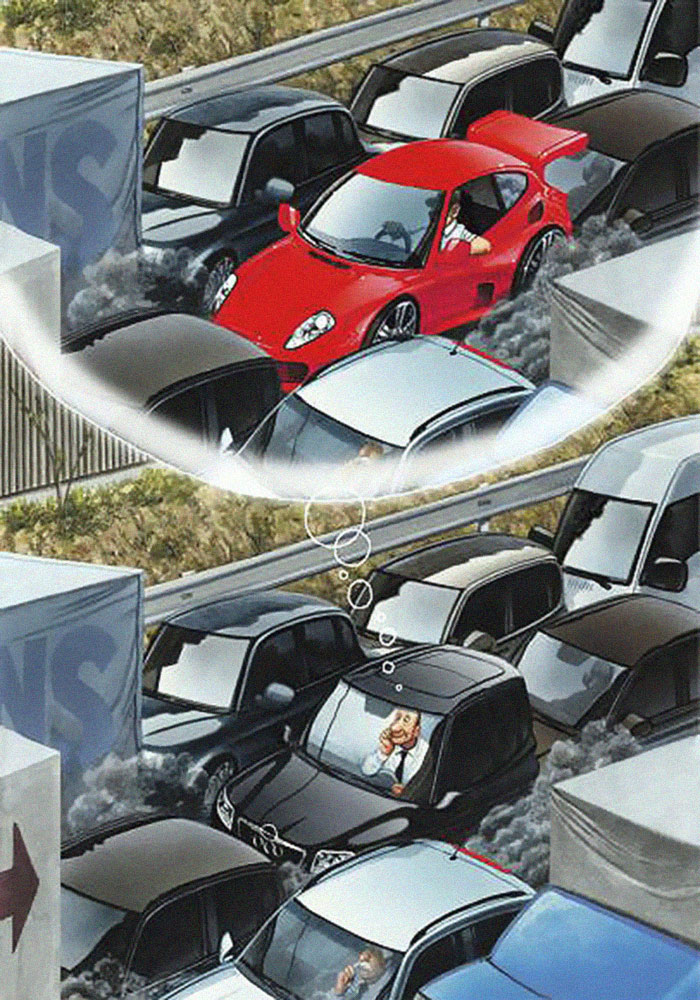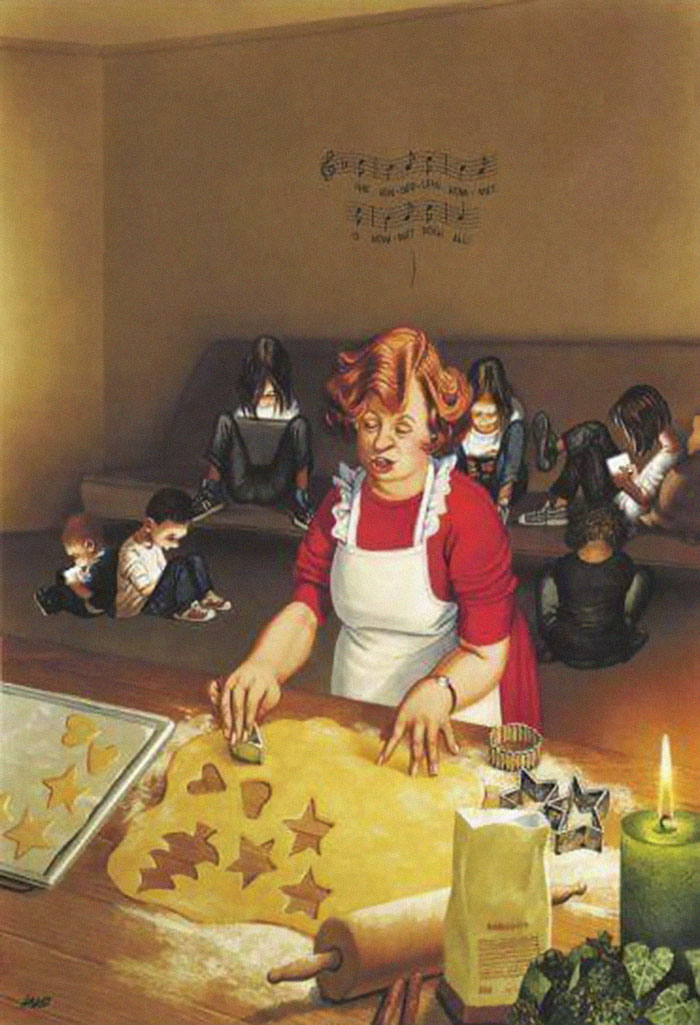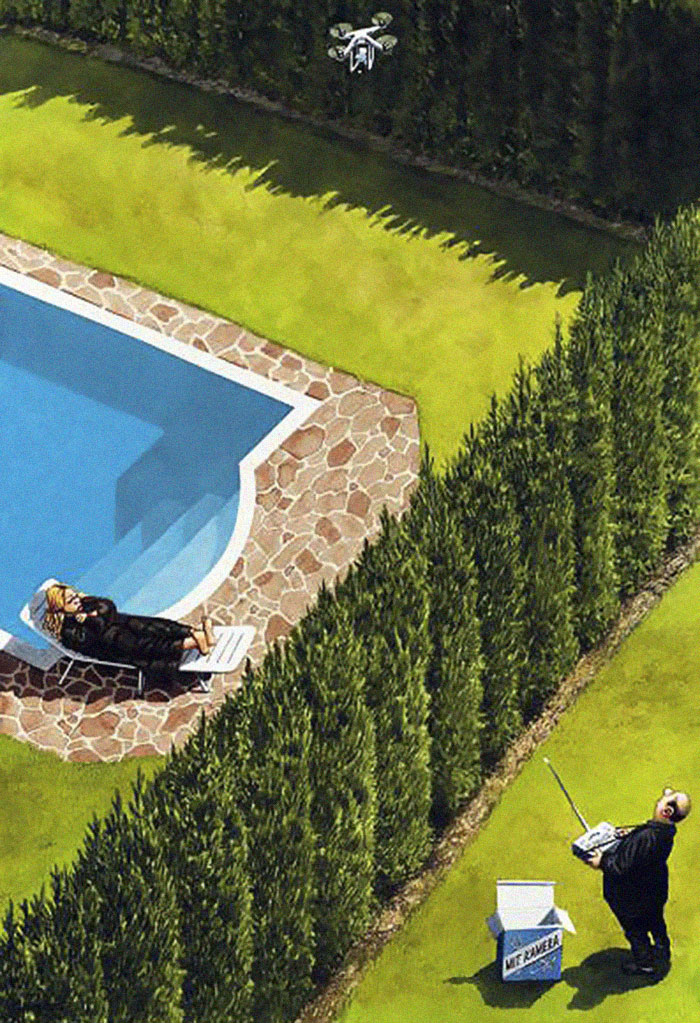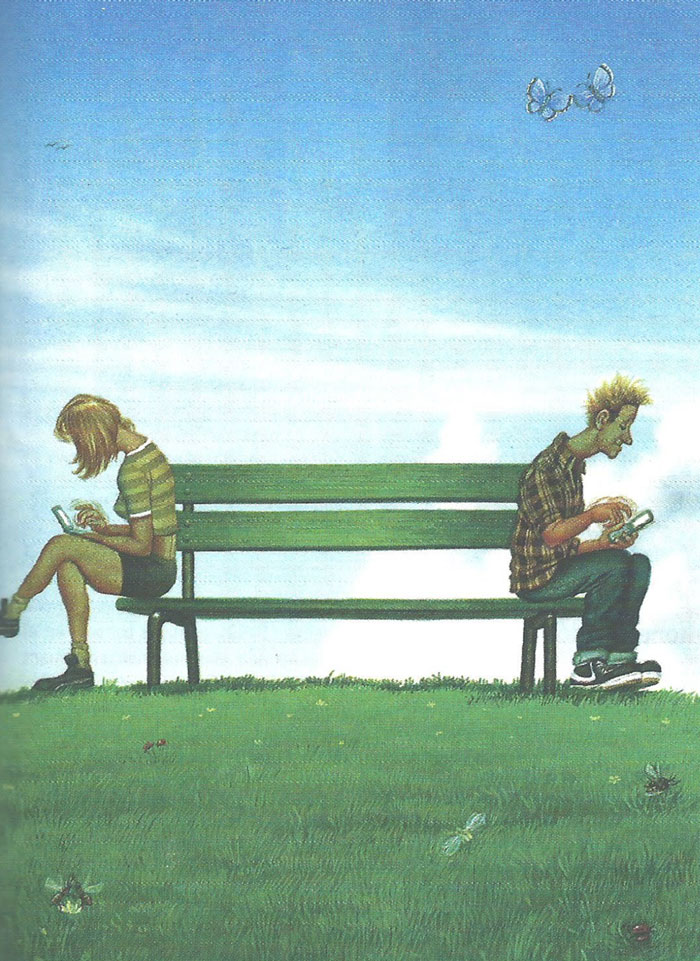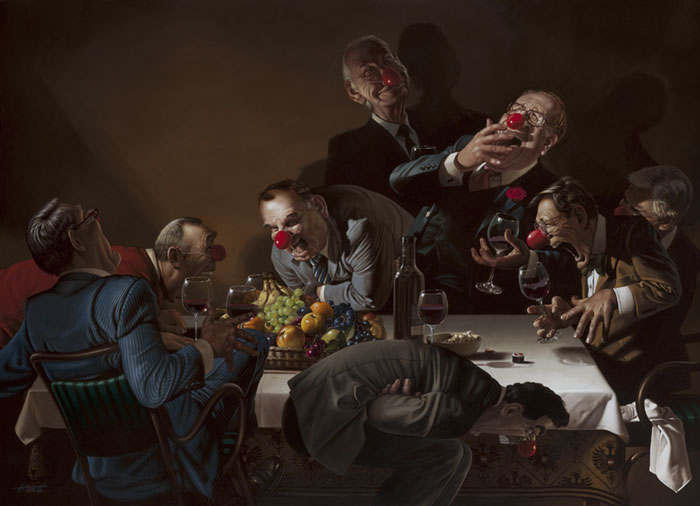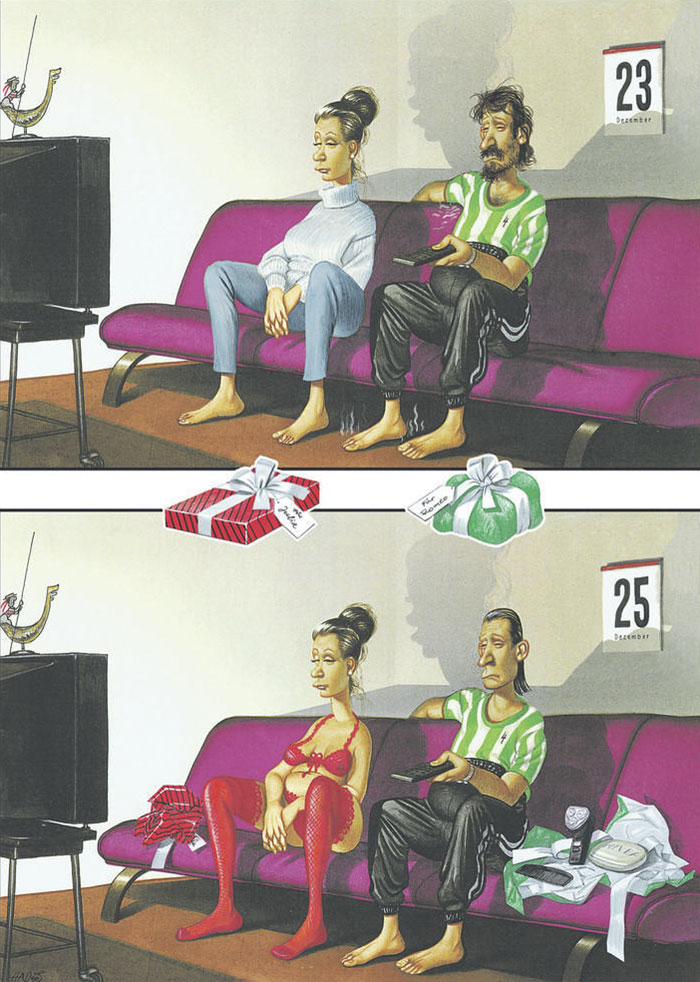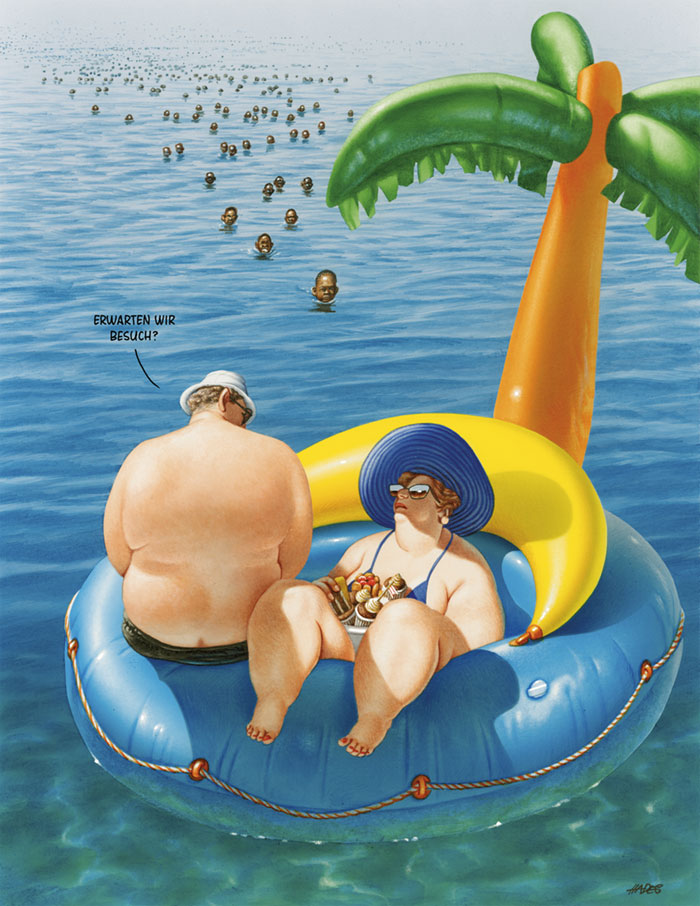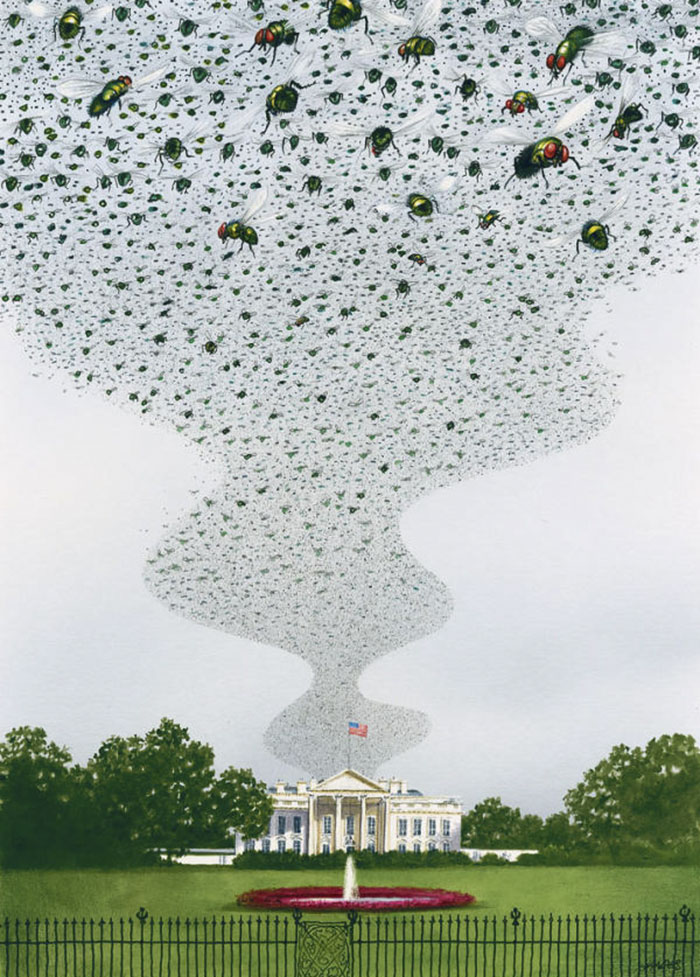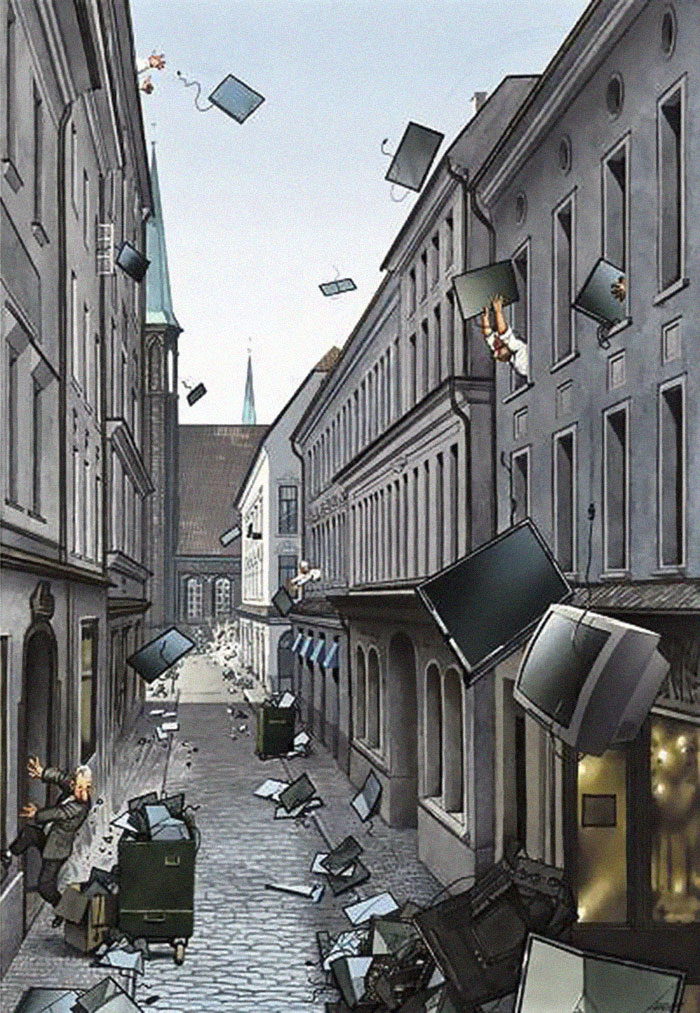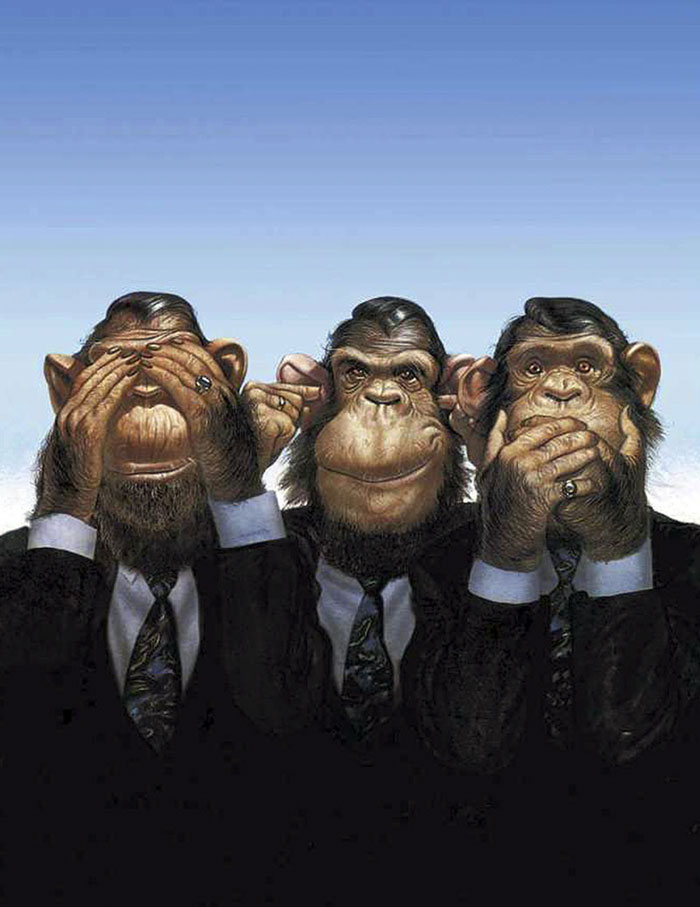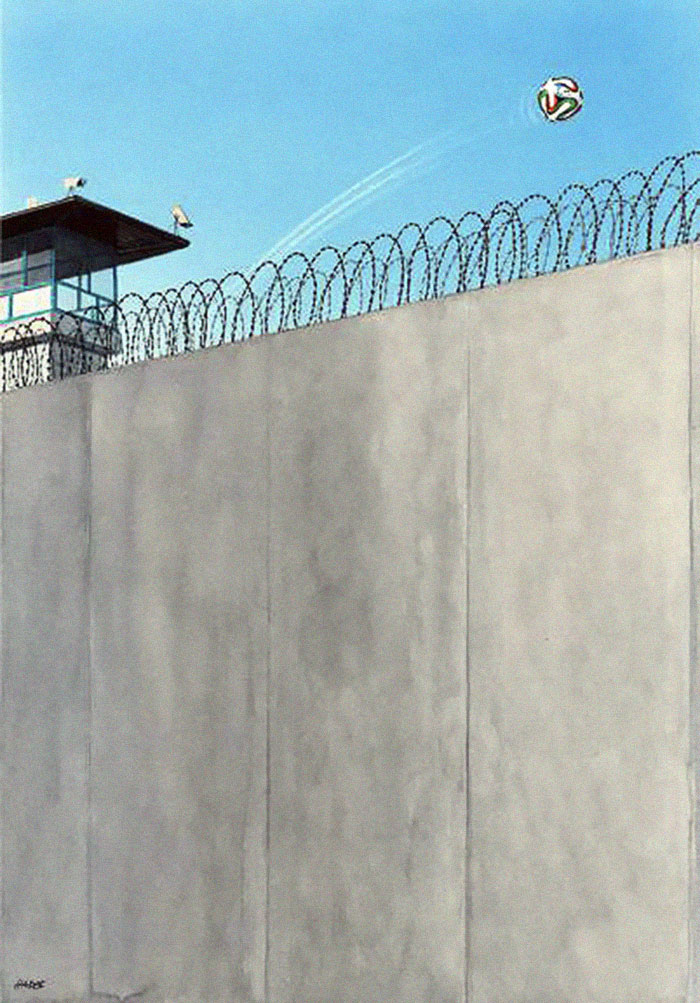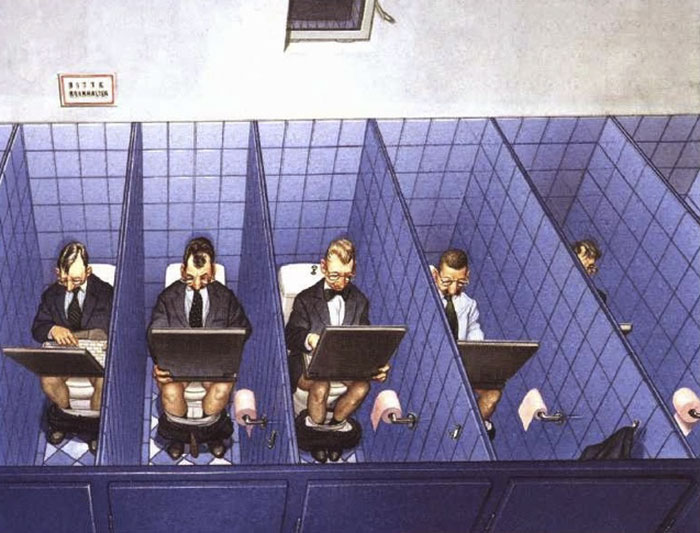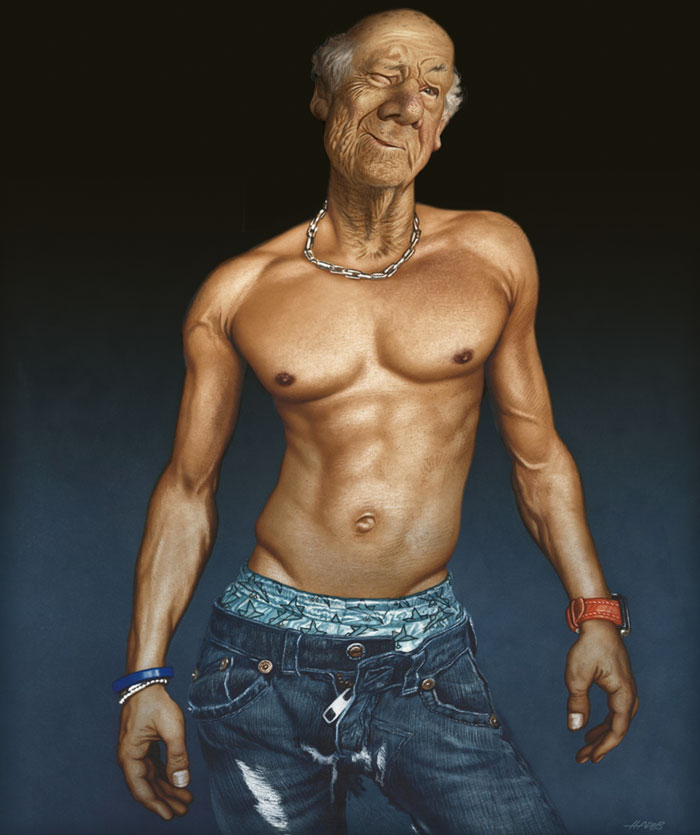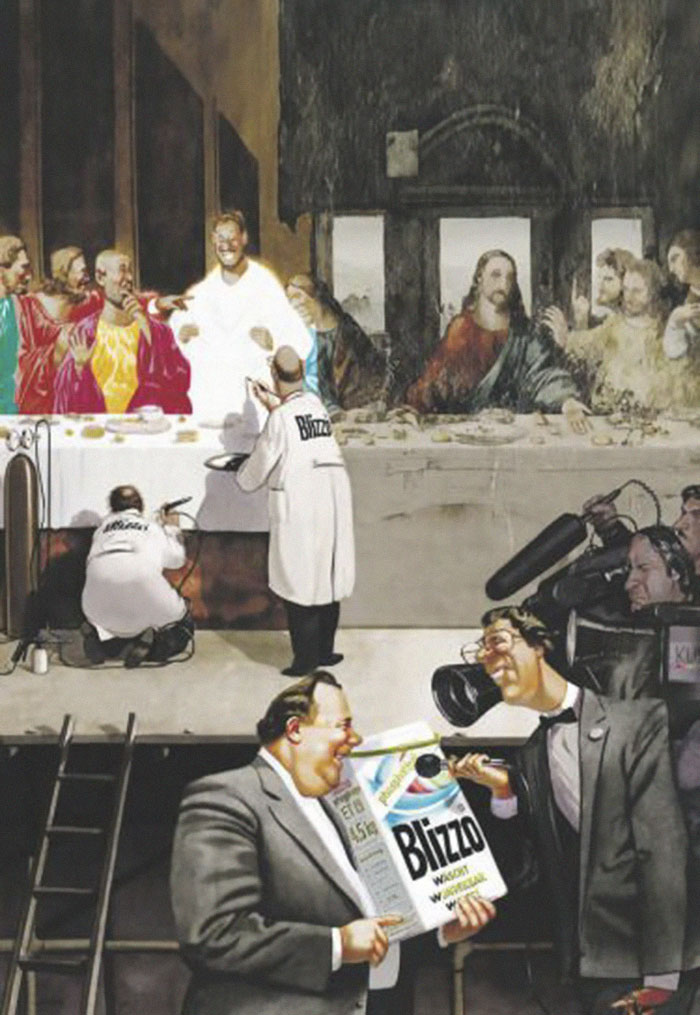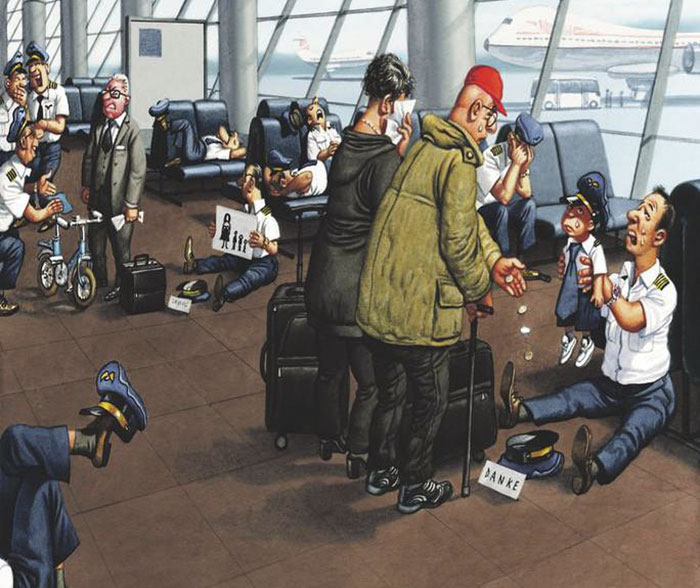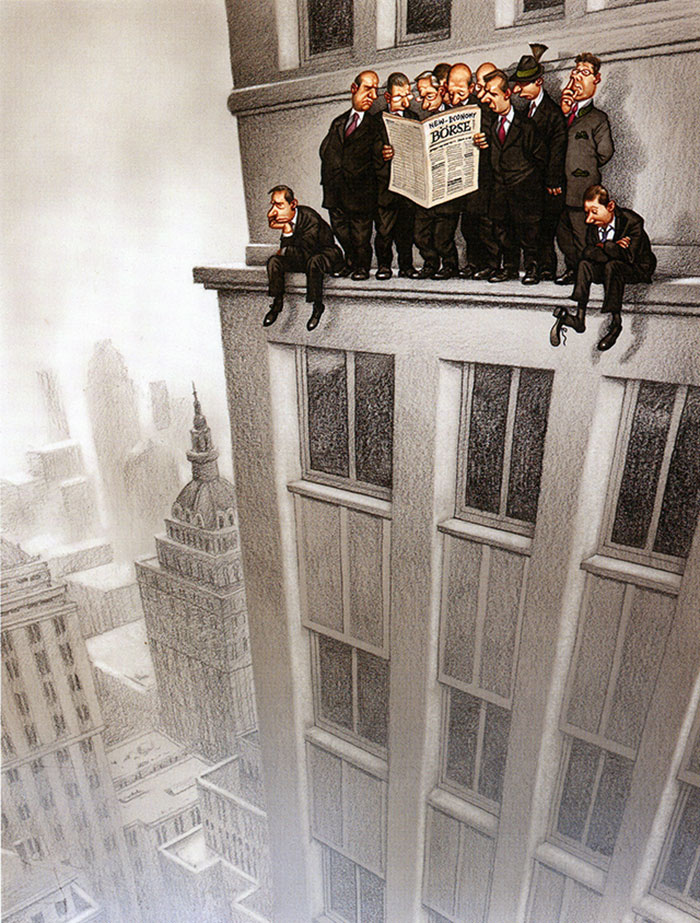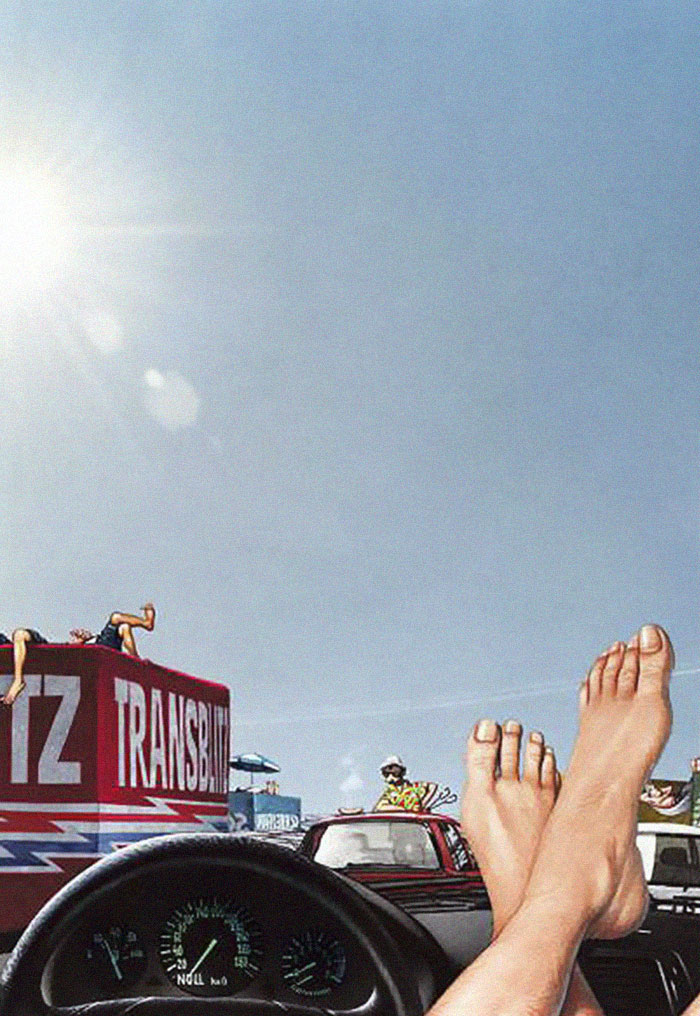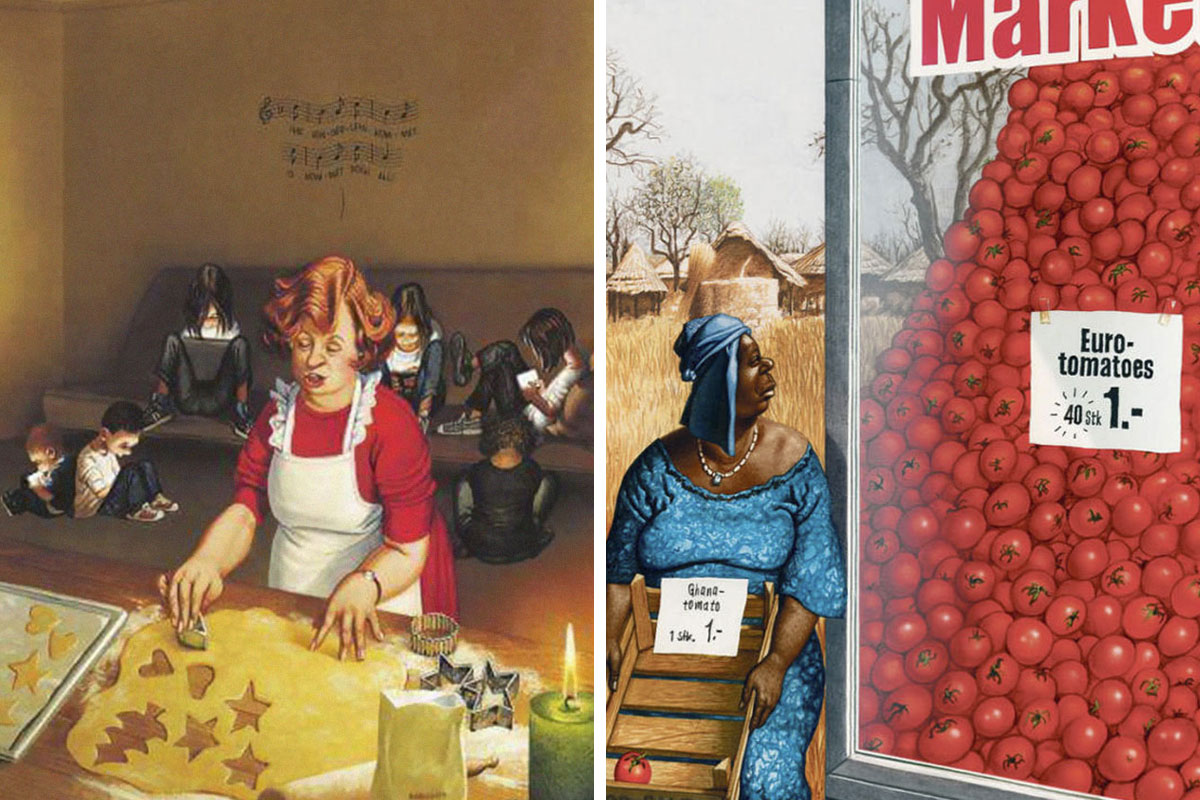
What’s Wrong With Today’s Society, As Captured In 30 Honest Illustrations By Gerhard Haderer (New Pics)
Edgar Degas, a 19th-century French impressionist, once said, “Art is not what you see, but what you make others see”. Indeed, with their intricate work, artists often send a message, which can evoke all sorts of emotions, be it astonishment, joy, anger, or others. And as the quote suggests, make us notice things we haven’t yet; or, in some cases, aren’t willing to.
Some uncomfortable truths are depicted in the works of the Austrian cartoonist and caricaturist Gerhard Haderer. His satirical depictions of current-day society are brutally honest, yet often accurate as well. We have gathered some of them into this list, so you can have a look at what he was trying to make others see with his artwork. Scroll down to find the thought-provoking images below.
This post may include affiliate links.
Born in Leonding, Austria, Gerhard Haderer is considered by some to be the best cartoonist and caricaturist in the German-speaking world. Over the years he has worked as a graphic artist, draughtsman, and illustrator for advertising companies, as well as a freelance cartoonist and satire illustrator.
During his multifaceted career, the artist has covered numerous topics, from politics to religion and even veganism, and appeared in an abundance of publications. He has also released books, one of which, titled ‘Das Leben des Jesus’ (or ‘The Life of Jesus’), created quite a commotion among some people, leading up to Haderer even facing court in Greece.
I am just watching this photo on my phone at my home while it is a beautiful day outside, pittying people who can’t appreciate and enjoy nature without involving technology.
‘The Life of Jesus’ is a cartoon book of religious satire, depicting the life of Christ in a way that some Greeks didn’t find appropriate. In the beginning of 2005, a court in Athens charged the artist with blasphemy and banned the book itself. The restriction on the book was reportedly the first ban of its kind in Greece in more than 20 years.
Gerhard Haderer was given a six-month suspended sentence in absentia. However, according to Refworld, in March of the same year, the court acquitted him of all charges. The decision was based on the grounds that the book’s humorous qualities precluded it from being maliciously blasphemous.
In addition to religion, Haderer’s works often touch upon other sensitive topics as well, such as politics, for instance. As seen in the examples on this list, he also depicts relevant societal problems, from consumerism to the negative ways technology affects our everyday lives.
The artist’s brutally honest depictions of our society are not completely baseless. For example, a person taking a selfie quite literally in the jaws of danger shows the extent to which some people are willing to go for a picture. Unfortunately, it can lead to tragedy at times. Newsroom revealed that between the year 2008 and 2021, as many as 379 people were killed due to selfies.
Quite a few of Gerhard Haderer’s illustrations cover the negative influence technology has on people. They often portray the younger generation as the one more prone to being glued to their phones, which is sadly quite representative of reality nowadays.
Research reveals that even though the usage depends heavily on the domain of technology, young adults typically use it more than those older than them. According to Pew Research Center’s 2019 survey, 93% of millennials owned smartphones, compared to 90% of Gen X representatives, and 68% of baby boomers.
close enough... nowadays one person will be watching TV, the rest on their own devices.
Facing unfavorable but true facts can be a pill that’s hard to swallow. That’s why some artwork is often deemed controversial or even offensive by some people. However, controversial art can have a positive effect on society nevertheless, as it typically evokes important discussions and can lead to positive change.
I don't know what to think about this one, a lots of adults are complaining about the youth being always on the phone (or tablet, etc..) but those are the same that give their babies a phone when they are busy (or when they don't have time to play with them, or when they want time alone)
Too true! Especially if you live in an area that gets lots of tourists... last week, I opened my door and came almost face to face with a drone.. even though there're signs everywhere saying it's prohibited... it's not even the first time something similar happens... I mean, you can imagine how many times it must've happened before we got the signs... Don't get me wrong, I have nothing against those who just want a bit of a panoramic view from up high... but if we can reach out and grab your drone, you're definitely aware of what you're doing, and it's not for the "panoramic view", that's for sure!
Artabys emphasized that controversial art typically brings light to certain political and social issues, this way sparking public conversation about them. It becomes a method of expressing different points of view that encourages others to get acquainted with them. Whether it’s related to politics, technology, or other topics, controversial art also drives the development of artistic expression itself.
The real clowns are the people these guys are laughing at. Us, the voting proletariat that keeps them in power with promises of cake and circuses. They know what they're doing.
An article in Artland Magazine discussed some examples of controversial art presented over the last decades. For instance, Marcel Duchamp’s ‘Fountain’—a urinal that was introduced as art back in 1917 and raised a lot of questions about the definition of art itself. Or ‘Guernica’ by Pablo Picasso—an anti-war statement condemning the bombing of the town of Guernica in 1937.
Being attracted to the stench of s**t? Edit: On further reflection, I think it’s more to do with flies feed on things that are rotting.
When it comes to paintings and similar forms of expression, graffiti is often considered a controversial one. What some people find to be beautiful pieces showcasing someone’s creativity, others deem vandalism. People are typically split into two camps about it, and the one that’s not in favor of it is usually bigger. A 2014 survey revealed that as much as 51% of people in the US didn’t consider graffiti to be art.
I think this is what some are considering for the future of schools in the US sadly
It’s not only paintings that can be controversial, though. Music can also raise a lot of eyebrows and American composer John Cage proved that to be true. His piece titled ‘4’33’ (or ‘four minutes, thirty-three seconds’), first performed back in 1952, is a three-movement piece of… silence.
The composer was inspired by Robert Rauschenberg’s ‘White Painting’, which were seemingly just plain white canvases. Similarly, Cage’s composition consisted of nothing more than silence. Three parts of it; 30 seconds for the first one, two minutes, 23 seconds for the second, and one minute, 40 seconds for the third.
In an episode of the ‘Speaking of Psychology’ podcast, professor emerita of psychology at Boston College, Ellen Winner, PhD, pointed out that artists are continuously pushing the boundaries by creating something people wouldn’t have considered art before. That’s why it’s so difficult to determine what exactly art is, which might make certain works seem controversial.
If you’d like to delve deeper into the art world, browse this list of some of the most well-recognized paintings previously shared by Bored Panda, or take a look at these amazing examples of street art. There’s also a list dedicated entirely to Oreo cookie artwork for those who are interested in somewhat less conventional mediums.
THey are sitting in their cars like that because it's a take on the endless traffic jams when holiday season begins. So they spend the majority of their holidays in the traffic jam.
Some of these are good, but holy sh*t, so many are just inflammatory depictions of made-up problems. Nothing wrong with using a computer to check the news. Nothing wrong with taking a photo of a memory (stop gatekeeping how people enjoy things). Not every new behaviour is evil.
I found the one of the chicken, as previously stated, very.. uh, distressing if thats fhe right word. Dont know why its so different than the others photos. myabe its it being a animal that i personally own, or something like that lol thank to whoever reads this rambling, i dont blame you if you dont
Context? For all those BP articles where some writer explains a TikTok video without adding a gram of information, there's nothing added here? I suspect I might agree with many of the points being raise here, but without context, they just look like ugly paintings of ugly people doing strangely ugly things.
Satire is open to interpretation. It forces you to confront truth, or give consideration to another opinion.
Load More Replies...Some of these are good, but holy sh*t, so many are just inflammatory depictions of made-up problems. Nothing wrong with using a computer to check the news. Nothing wrong with taking a photo of a memory (stop gatekeeping how people enjoy things). Not every new behaviour is evil.
I found the one of the chicken, as previously stated, very.. uh, distressing if thats fhe right word. Dont know why its so different than the others photos. myabe its it being a animal that i personally own, or something like that lol thank to whoever reads this rambling, i dont blame you if you dont
Context? For all those BP articles where some writer explains a TikTok video without adding a gram of information, there's nothing added here? I suspect I might agree with many of the points being raise here, but without context, they just look like ugly paintings of ugly people doing strangely ugly things.
Satire is open to interpretation. It forces you to confront truth, or give consideration to another opinion.
Load More Replies...